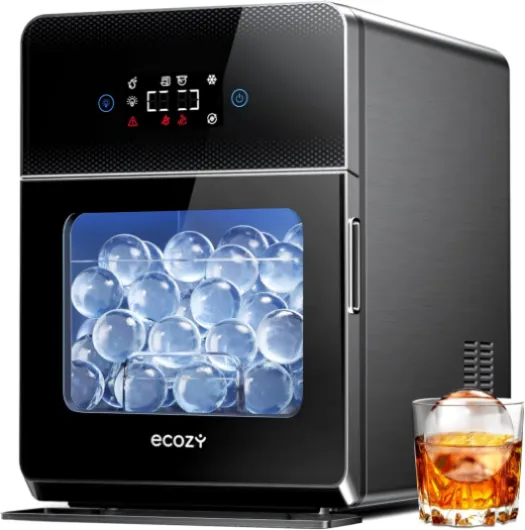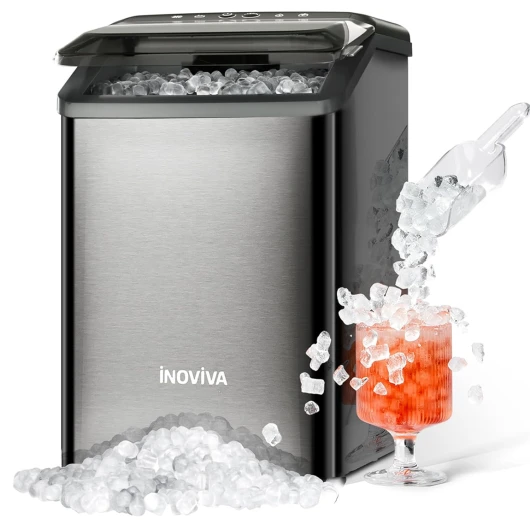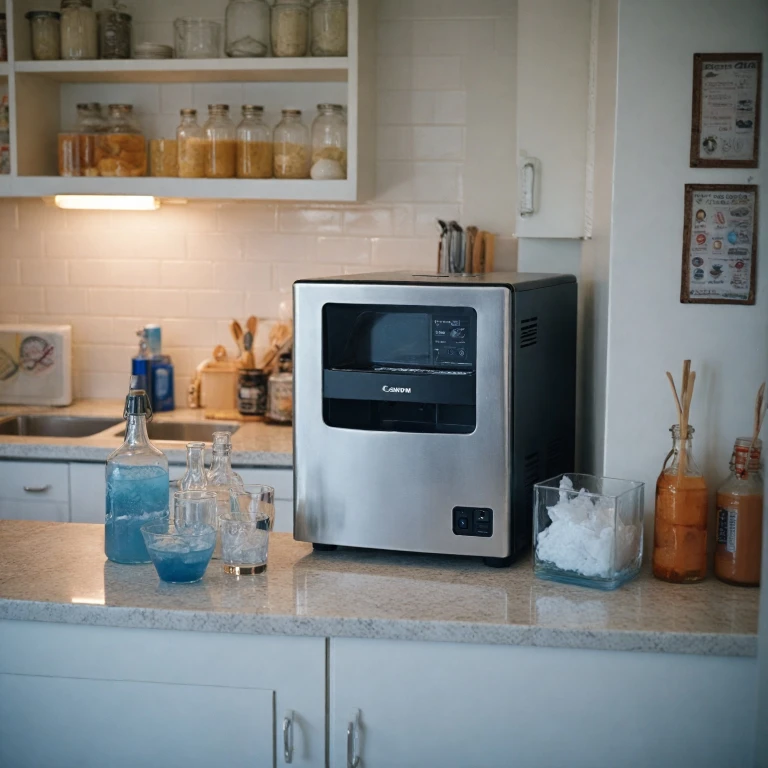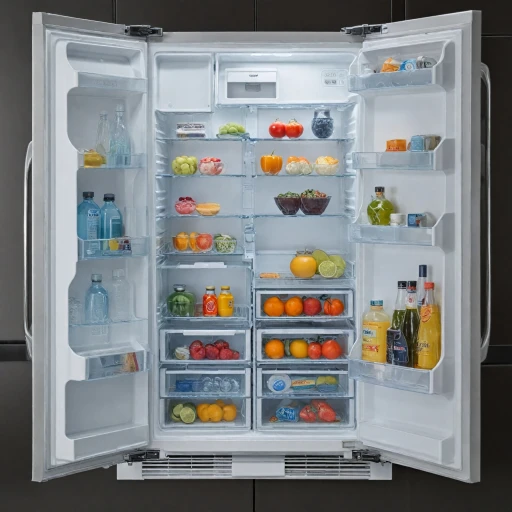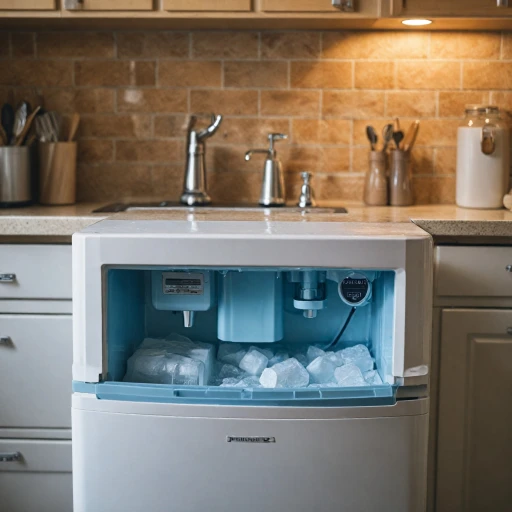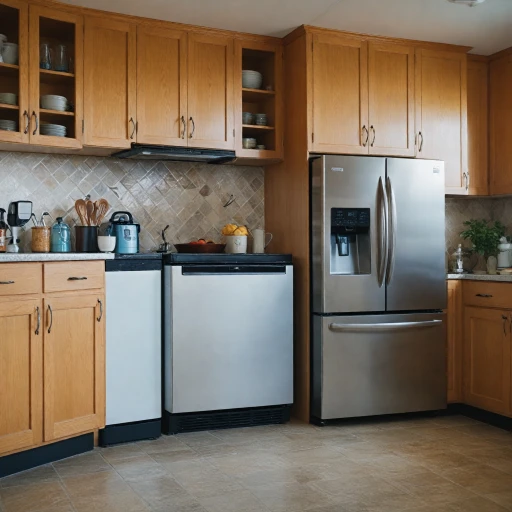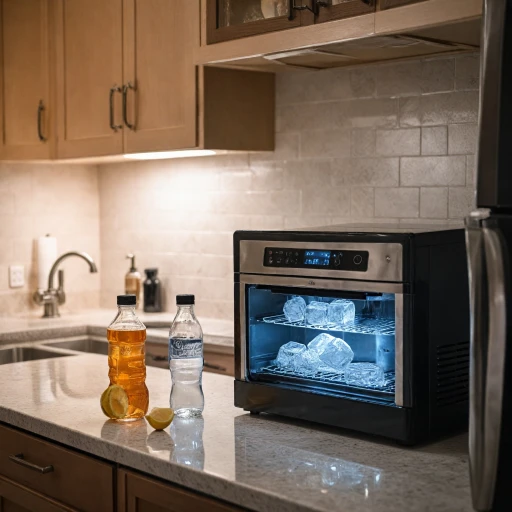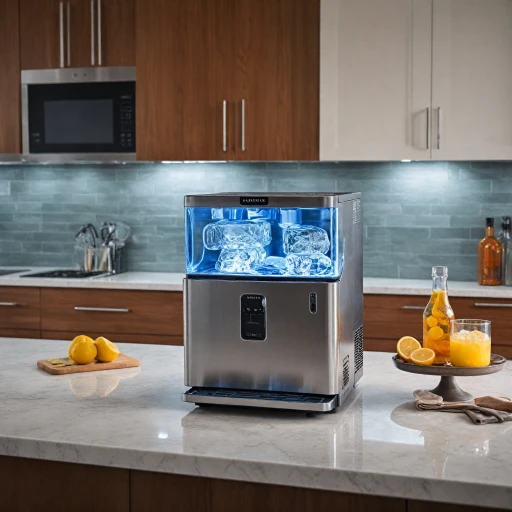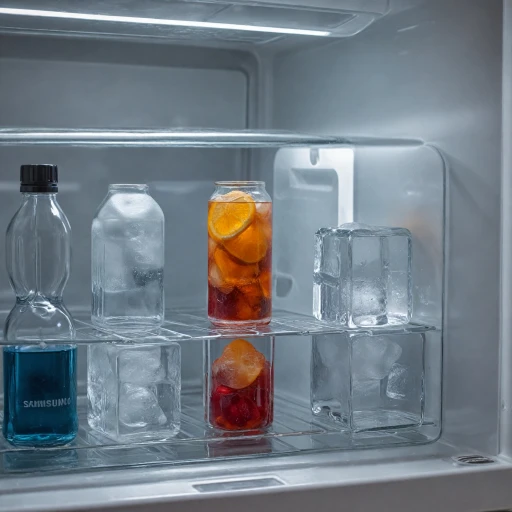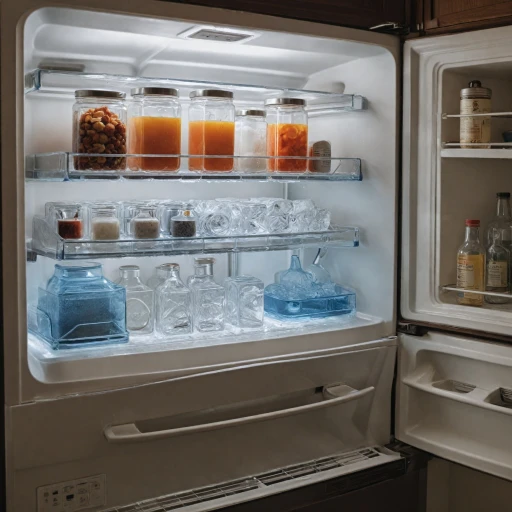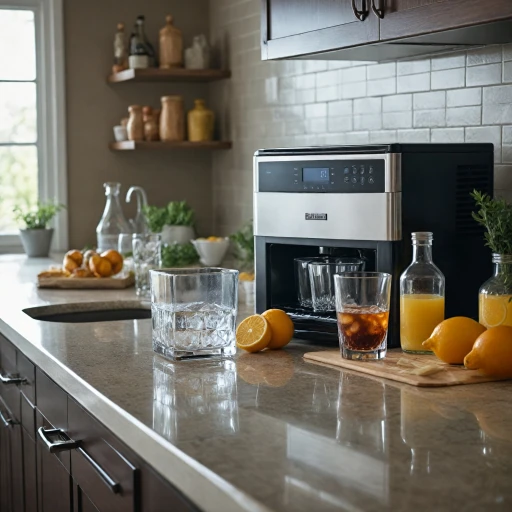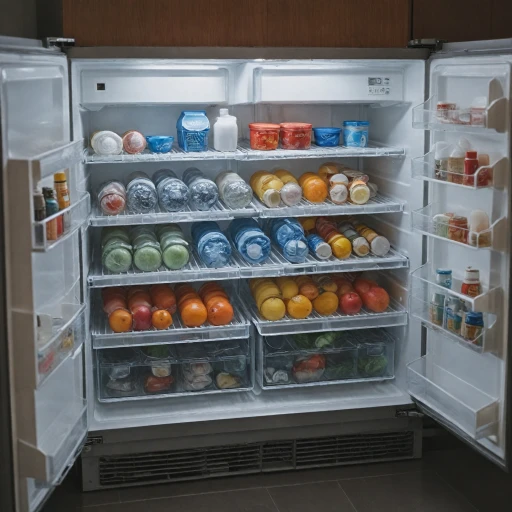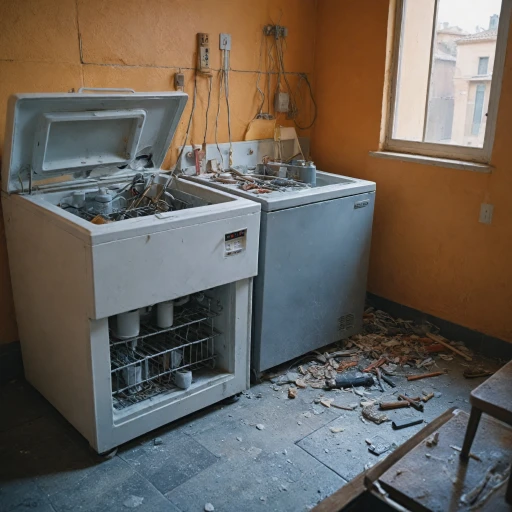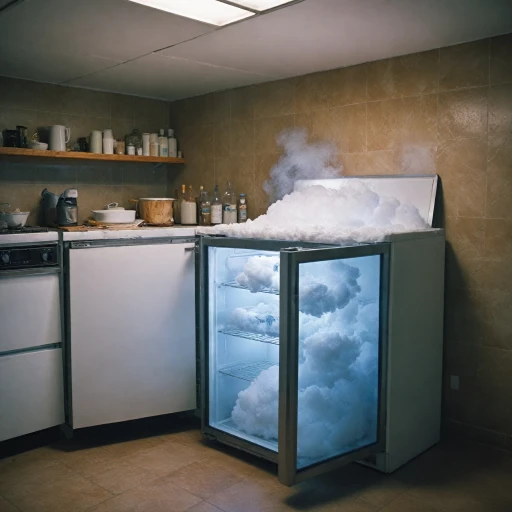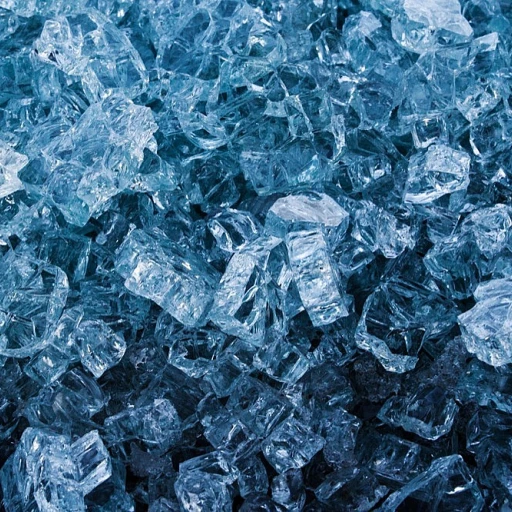
Common Reasons Your Kenmore Elite Ice Maker Stops Working
Understanding the Underlying Causes of Ice Maker Malfunctions
Is your Kenmore Elite ice maker refusing to work? It's important to pinpoint the problem to resolve it efficiently. Here are some common factors that could cause your Kenmore refrigerator ice maker to stop producing ice:- Power and Connectivity Issues: Ensure your appliance is properly plugged in and that the control panel is functioning. Often, connectivity issues between the refrigerator and the ice maker can lead to production halts. Examine these elements to determine if they are the root of your problem.
- Water Supply Interruptions: A blocked or malfunctioning water inlet valve could restrict water flow to your ice maker, leading to an empty ice tray. Check the water filter and ensure the water line isn’t clogged or frozen. Discover more about tackling such problems here and stay informed.
- Mechanical and Component Failures: Issues like jammed dispenses or faulty inlet valves often require repair or replacement. Consistently checking the ice bin and control components can help in maintaining the smooth operation of your Kenmore Elite.
- Maintenance Concerns: Regular maintenance like cleaning the water filter and checking the ice maker's internal components can prevent unforeseen appliance repairs in the future. Consistent care enhances efficiency and prolongs the lifespan of your unit.
Diagnosing Power and Connectivity Issues
Evaluating Your Kenmore Elite's Power and Connectivity
Ensuring your Kenmore Elite ice maker is connected to power and the controls are appropriately set is crucial for its operation. Here’s how you can diagnose potential issues related to power and connectivity:- Check the Power Source: Verify that the refrigerator is plugged in securely. A loose connection or a tripped breaker could disrupt the power supply, impacting the ice maker’s functionality.
- Control Panel Settings: Sometimes, the control panel settings might have been accidentally altered. Ensure that the ice maker function is turned on and displays no apparent errors.
- Door Position: Improper door closure might prevent the ice maker from working. The refrigerator door must be fully closed to engage the ice production properly. Additionally, check whether the door sensor or switch might be malfunctioning.
- Inspect for Obstructions: Occasionally, objects might block the ice maker, obstructing the mechanical elements or preventing the door's full closure.
Addressing Water Supply Problems
Resolving Water Flow Problems in Your Kenmore Elite Refrigerator
Understanding the water supply issues in your Kenmore Elite ice maker is crucial for ensuring consistent ice production. Several factors can affect the flow of water into your ice maker, disrupting the ice-making process. First, start by examining the water line connected to your refrigerator. Any kinks or clogs can hinder water flow, leading to insufficient water reaching the ice maker. Ensure the line is straight and free from obstructions. The water inlet valve is another component to inspect. The valve controls the flow of water into the fridge and if faulty, it may need a replacement to get your water dispenser and ice maker working properly again. Ensure the valve is tightly installed and there are no signs of damage or leakage. Don’t overlook the water filter, which should be replaced regularly to maintain optimal water quality and flow. A clogged filter can reduce water pressure significantly, affecting both ice production and the refrigerator water dispenser. Always check the manufacturer's instructions on replacing the water filter. Lastly, verify that the control panel settings for the ice maker are adjusted correctly to promote smooth water flow. Incorrect settings can cause water supply issues, impeding ice production. Resolving these water supply problems involves regular checks and maintenance. You might find tips for adjusting your ice maker to maximize ice production beneficial for optimal function. These steps not only ensure your Kenmore Elite continues making ice efficiently but also stave off potential future problems.Mechanical and Component Failures
Mechanical Problems and Component Failures
When your Kenmore Elite ice maker ceases to perform its primary function—making ice—investigating mechanical failures is a critical step. Several essential components may experience issues that could halt ice production.- Ice Maker Control Arm: Ensure that the control arm, which signals to the ice maker to stop production when the bin is full, isn't stuck or improperly positioned, as this can prevent new ice from being generated.
- Inlet Valve Malfunction: The water inlet valve is responsible for allowing water to flow into the ice maker. If it’s defective or obstructed, it can halt ice production. You might need to check and replace the water inlet valve if necessary. This component can sometimes be affected by sediment or calcium deposits, impacting its function.
- Ice Maker Motor or Module: Over time, the motor or module responsible for cycling the ice-making process may encounter wear and tear. Listen for unusual noises coming from the ice maker, as this could indicate component failure. If the motor isn't operating properly, it will hinder the production of ice cubes.
- Clogged or Frozen Dispenser Mechanism: A frozen or blocked dispenser door or mechanism can also stop ice from being dispensed properly. Conduct a thorough check, ensuring that there are no physical obstructions preventing the ice from moving freely from the ice maker to the dispenser.
- Thermostat Issues: The ice maker's thermostat must function correctly to maintain optimum temperatures. If it's failing, it can cause the freezer to be too warm or too cold, which impacts ice formation.
Maintenance Tips to Prevent Future Issues
Preventive Measures for a Smooth-Running Ice Maker
- Regularly Check the Water Filter: It's essential to monitor and replace the water filter in your Kenmore refrigerator to keep your ice maker in top condition. A clogged water filter can restrict water flow, affecting ice production. Change it as recommended by the manufacturer to prevent potential issues.
- Inspect and Clean the Inlet Valve: Sediment and debris can accumulate in the water inlet valve over time, impacting its efficiency. Regularly inspecting and cleaning this component ensures unobstructed water supply to the ice maker, maintaining optimal performance.
- Keep the Freezer Door Sealed: Make sure that your freezer door is closing tightly. A door that's not sealing properly can lead to temperature fluctuations, which may interrupt the ice-making process.
- Monitor the Control Panel Settings: Occasionally check the settings on the control panel of your Kenmore refrigerator. Ensure everything is correctly configured to facilitate proper ice maker functioning. Misconfigured settings can cause unnecessary disruptions in ice production.
- Regular Ice Bin Maintenance: Regularly empty and clean the ice bin to prevent the formation of ice clumps. This ensures consistent ice dispensing and prevents mechanical strain on the dispenser. *For comprehensive maintenance steps, consider reviewing resources related to commercial ice machine care for additional insights.*
- Inspect the Freezer Temperature: Ensure your freezer is set to the recommended temperature for optimal ice-producing conditions. Extreme temperatures can impede ice production.
By following these maintenance tips, you can sustain your Kenmore Elite ice maker's efficiency and longevity, minimizing the need for appliance repair and avoiding common problems associated with ice makers not working effectively.
When to Call a Professional for Repairs
Knowing When to Seek Professional Help
While troubleshooting your Kenmore Elite ice maker, there are certain scenarios where calling a professional is the best course of action. Here are some situations where expert intervention is recommended:
- Persistent Power Issues: If you've checked the power and connectivity, but your ice maker still isn't working, it might be a more complex electrical issue. Professionals have the tools to safely diagnose and repair these problems.
- Water Supply Complications: After addressing potential water supply issues, such as a blocked water filter or a malfunctioning water inlet valve, if the problem persists, it could indicate a deeper issue within the plumbing or refrigerator's internal components.
- Mechanical Failures: If you've identified a mechanical failure, such as a broken ice maker motor or a faulty control panel, these parts often require specialized knowledge and tools to replace or repair.
- Complex Component Replacement: Replacing components like the ice dispenser or the control board can be intricate. Professionals ensure these replacements are done correctly to avoid further damage.
- Safety Concerns: If you encounter any safety issues, such as electrical sparks or water leaks, it's crucial to contact a professional immediately to prevent hazards.
Regular maintenance can prevent many of these issues, but when they do arise, professional appliance repair services are equipped to handle them efficiently. They can ensure your Kenmore Elite refrigerator is back to making ice effectively, minimizing downtime and inconvenience.
-logo-retina.jpg)
